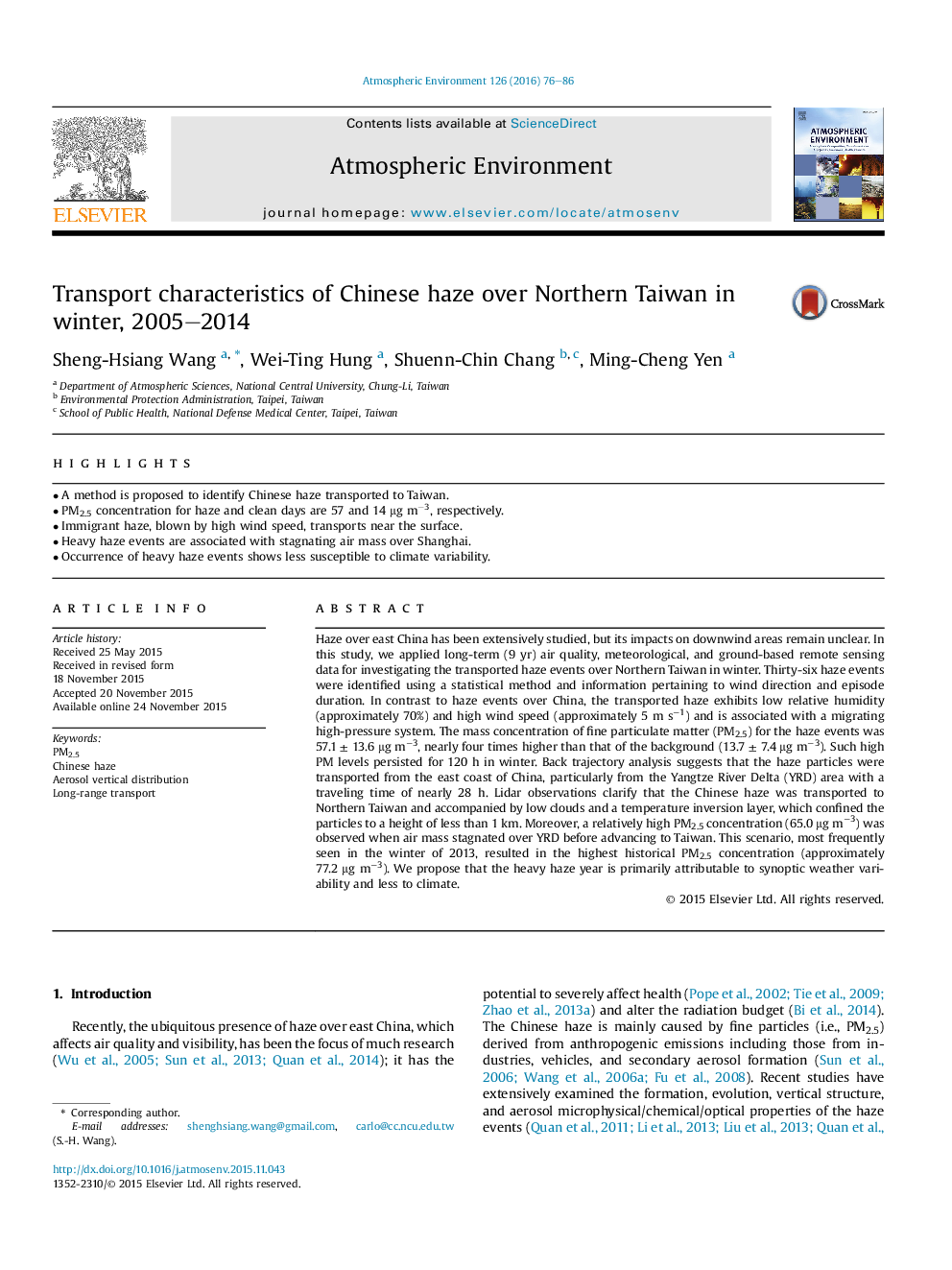| کد مقاله | کد نشریه | سال انتشار | مقاله انگلیسی | نسخه تمام متن |
|---|---|---|---|---|
| 6337161 | 1620348 | 2016 | 11 صفحه PDF | دانلود رایگان |

- A method is proposed to identify Chinese haze transported to Taiwan.
- PM2.5 concentration for haze and clean days are 57 and 14 μg mâ3, respectively.
- Immigrant haze, blown by high wind speed, transports near the surface.
- Heavy haze events are associated with stagnating air mass over Shanghai.
- Occurrence of heavy haze events shows less susceptible to climate variability.
Haze over east China has been extensively studied, but its impacts on downwind areas remain unclear. In this study, we applied long-term (9 yr) air quality, meteorological, and ground-based remote sensing data for investigating the transported haze events over Northern Taiwan in winter. Thirty-six haze events were identified using a statistical method and information pertaining to wind direction and episode duration. In contrast to haze events over China, the transported haze exhibits low relative humidity (approximately 70%) and high wind speed (approximately 5 m sâ1) and is associated with a migrating high-pressure system. The mass concentration of fine particulate matter (PM2.5) for the haze events was 57.1 ± 13.6 μg mâ3, nearly four times higher than that of the background (13.7 ± 7.4 μg mâ3). Such high PM levels persisted for 120 h in winter. Back trajectory analysis suggests that the haze particles were transported from the east coast of China, particularly from the Yangtze River Delta (YRD) area with a traveling time of nearly 28 h. Lidar observations clarify that the Chinese haze was transported to Northern Taiwan and accompanied by low clouds and a temperature inversion layer, which confined the particles to a height of less than 1 km. Moreover, a relatively high PM2.5 concentration (65.0 μg mâ3) was observed when air mass stagnated over YRD before advancing to Taiwan. This scenario, most frequently seen in the winter of 2013, resulted in the highest historical PM2.5 concentration (approximately 77.2 μg mâ3). We propose that the heavy haze year is primarily attributable to synoptic weather variability and less to climate.
Journal: Atmospheric Environment - Volume 126, February 2016, Pages 76-86